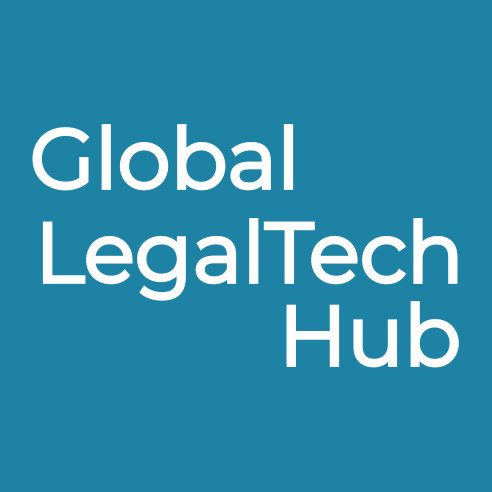Automating web compliance is much easier than we believe
- Global Legal Tech Hub

- Jan 29, 2023
- 5 min read
Updated: Feb 8, 2023
Diego Richards, Chief Operations Officer at Stillio

Introduction
In the beginning, the Internet was a place to create, share, and communicate. That essence is still present today, but as this phenomena grew and became crucial for companies, it started to turn more professional. In order to standardize and make information more clear, accurate, and accessible to all users, the internet also became subject to regulations.
Web compliance is now present in businesses of all sorts, even for bloggers and content creators. Although necessary to regulate the incredible amount of information and products floating around the internet, we can’t deny compliance is seen as a pain in the neck by all industries.
This is partly because compliance tasks are still performed manually by some teams, and the growing amount of data generated by assets like the company website, social media profiles, and terms and conditions make it nearly impossible to keep track of absolutely everything and stay compliant. This workload even makes teams neglect and put compliance aside while focusing on other processes, leading to potential lawsuits and penalties.
As online compliance regulations grow in variety and complexity, businesses need to get their priorities back together. A great ally for this workstream is automation, which may sound out of reach, but is now a part of most accessible tools in the market.
In this article I’d like to cover how to automate compliance easily, using a feature all of us as internet users know very well: screenshots.
Automating compliance with screenshots
Am I saying we have to start taking screenshots of every single thing we want to keep track of? Actually, yes. But not in the way you think.
Automated screenshot solutions have been in the market for longer than you’d imagine. The premise is simple: provide the tool with the URL you want to capture, tell the tool how often you’d like it to capture the webpage, and done.
This mechanism can be used for anything from keeping a record of news stories published in different media on a particular study topic, to capturing search engine result pages to track SEO performance.
In the case of web compliance, online capturing can be used for various cases, the most common one being keeping copies of public records. Most regulations covering online assets have to do with recordkeeping, and screenshots serve as a great tool to reduce manual workload. With automated capturing, the actual recordkeeping and categorizing task is fulfilled, and teams are only needed to locate files in case of a record request.
Other uses in e-litigation include providing a particular content was live at a particular moment, and generating online evidence of brand usage for intellectual property cases, the latter being the main reason a big international fashion brand have trusted Stillio.
Benefits of automated screenshots in online compliance
Now you’re aware that screenshots can be automated, and that they can be of good use in compliance cases. However saving time, although crucial, isn’t the main reason why businesses are choosing online capturing.
Let’s go over other reasons why automated screenshots are the go-to solution to stay compliant:
Data preservation: No matter the capturing interval or storage option you choose, screenshots will be automatically saved and preserved, ready to use whenever they’re needed. Screenshotting solutions generate a pool of data that is sustainable to be referenced over time.
File format: The final aim of any discovery process is to share data with the other party. Therefore, it's your responsibility to make that information accessible to them. Automated screenshots can be shared in a variety of formats according to client preference. For example, captures hosted in Stillio can be shared through a private link, downloaded as a .jpg file, or linked to your drive of choice like Dropbox.
Cost: The monetary and time cost of going through all data implicated in the compliance process can be high. An eDiscovery solution may be a way out, but they're a significant investment for smaller businesses. Screenshot solutions have different pricing plans—Stillio starts at $29 per month, for example—that adjust to each company's recordkeeping needs.
Amount of data: The amount of data managed in the discovery process can be a lot to handle, making the identification and collection of relevant documents difficult. With a screenshot tool, you can group captures with tags to easily find what you're looking for. Screenshots can also be time-stamped, as that may be required for some legal procedures.
The web compliance landscape across industries
As I mentioned previously, online regulations are present in all industries. Automated capturing solutions have helped many businesses gather the information needed to stay compliant, and in doing so they’ve seen all types of requirements, each with their own objectives and details specific to each sector.
The first industry that comes to mind when thinking about the internet is ecommerce, as one of the main reasons users go online is to shop. Surprisingly, there isn’t one regulation specific to ecommerce. However, depending on where they’re located, online shops are most likely required to comply with data privacy regulations. The most popular is of course GDPR, which came into effect in 2018 for the EU, but we’ve also come across the California Consumer Privacy Act (CCPA) and the Children's Online Privacy Protection Act (COPPA).
As these three require businesses to have clear data policies in mind, as well as cookie management and opt-outs, it’s key to collect records of compliance. By automating screenshots of your own site, you can get evidence of having cookie banners, checkboxes, easy-to-locate terms and conditions, and more. These will come in handy in case of complaints or litigation.
Healthcare professionals also have to look after how they’re handling patient information to comply with the Healthcare Insurance Portability and Accountability Act (HIPAA). In this case, they can use online capturing to document policies, training completion, and archive website versions for future use.
Recordkeeping is also required in education: universities and colleges must comply with the Higher Education Opportunity Act (HEOA), which requires these institutions to make certain pieces of information public at specific times. Things like graduation rates, financial aid, and data policies must be up on the institution’s website, where timestamped screenshots can automate the task of gathering evidence.
Finally, there are regulations that apply to all websites equally, especially when it comes to accessibility. These rules aim to make online information accessible to everyone, regardless of sight, hearing, and other capabilities. There are many versions of these requirements, but the global most accepted guidelines are the Web Content Accessibility Guidelines (WCAG).
Closing thoughts
It’s most likely your company is affected by the regulations covered in this article, and therefore needs to stay up to date with any adjustments necessary for all online assets. However, there are tools (and teams behind those tools) ready to walk you through the process and help you stop relying on memory alone.
Chief Operations Officer at Stillio
www.stillio.com




Comments